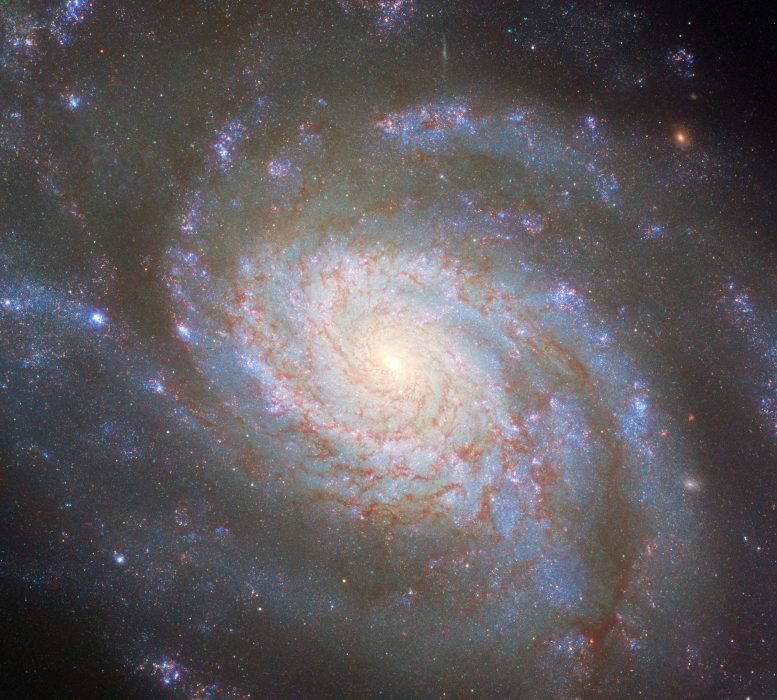
By ESA/HUBBLE JULY 8, 2024
Collected at: https://scitechdaily.com/how-hubble-sees-through-cosmic-dust-to-map-galaxies/
Measuring cosmic distances is essential in astrophysics, with the Hubble Space Telescope being key through its observations of Type Ia supernovae. These supernovae, known for their consistent brightness, help calibrate distances after accounting for intergalactic dust, as seen with galaxy NGC 3810.
A crucial task in astrophysics is measuring the distance to truly remote objects like galaxies, quasars, and galaxy clusters. This is particularly true when it comes to studying the early Universe, but it’s a difficult task. Only in the case of a few nearby objects like the Sun, planets, and some nearby stars can we measure their distances directly. Beyond that, various indirect methods need to be used; one of the most important is by examining Type Ia supernovae, and this is where the NASA/ESA Hubble Space Telescope comes in.
NGC 3810, the galaxy featured in this image, was the host of a Type Ia supernova in 2022. In early 2023 Hubble focused on this and a number of other galaxies to closely examine recent Type Ia supernovae. This kind of supernova results from a white dwarf exploding, and they all have a very consistent brightness. That allows them to be used to measure distances: we know how bright a Type Ia supernova should be, so we can tell how far away it must be from how dim it appears.
One uncertainty in this method is that intergalactic dust in between Earth and a supernova blocks some of its light. How do you know how much of the reduction in light is caused by distance, and how much by dust?
With the help of Hubble, there’s a clever workaround: take images of the same Type Ia supernovae in ultraviolet light, which is almost completely blocked by dust, and in infrared light, which passes through dust almost unaffected. By carefully noting how much light comes through at each wavelength, the relationship between supernova brightness and distance can be calibrated to account for dust.

This image depicts the spiral galaxy NGC 3810, which in 2023 was included in a Hubble programme to improve the accuracy of distance measurements made using Type Ia supernovae. This was only possible because a white dwarf in NGC 3810 had just gone supernova, and Hubble captured this image before the supernova faded from view.
Supernovae are named for their year of discovery, followed by an incrementing tag of letters — a, b, and so on. Nowadays, with automated surveys, thousands of supernovae are discovered every year, and so this one received the name SN 2022zut, as the eighteen thousand, one hundred and forty-second found in 2022!
Credit: ESA/Hubble & NASA, D. Sand, R. J. Foley
Hubble can observe both these wavelengths of light in great detail with the same instrument. That makes it the perfect tool for this experiment, and indeed, some of the data used to make this beautiful image of NGC 3810 were focused on its 2022 supernova. You can see it as a point of light just below the galactic nucleus, or in the annotated image above.
There are many ways to measure cosmic distances; because Type Ia supernovae are so bright, they are one of the most useful and accurate tools, when they’re spotted. Many other methods must be used as well, either as an independent check against other distance measurements or to measure at much closer or farther distances. One such method that also works for galaxies is comparing their rotation speed to their brightness; based on that method, NGC 3810 is found to be 50 million light-years from Earth.

Leave a Reply